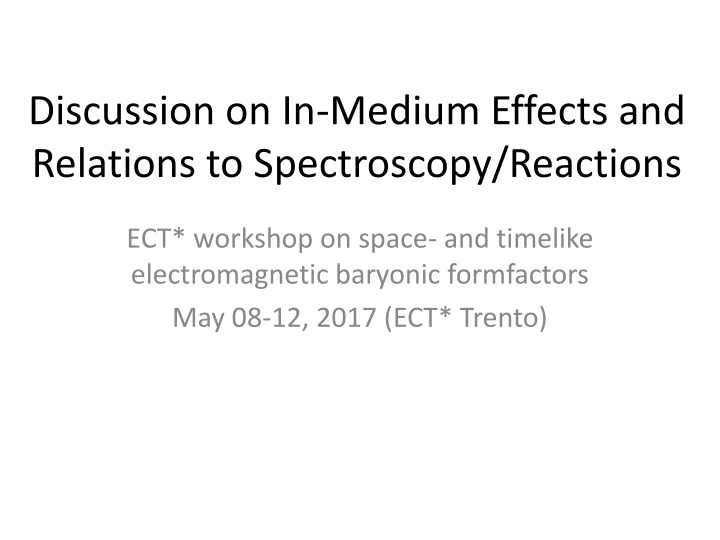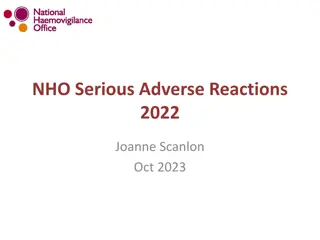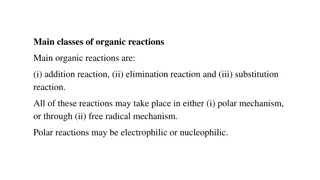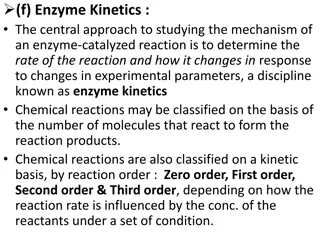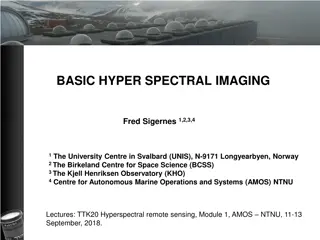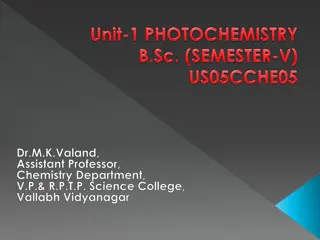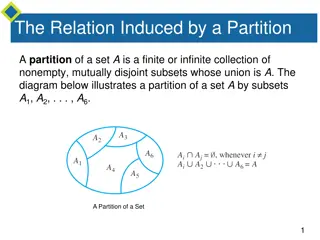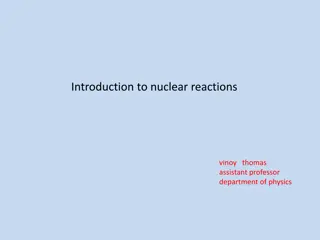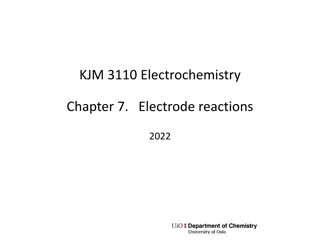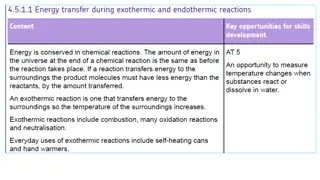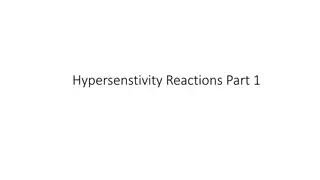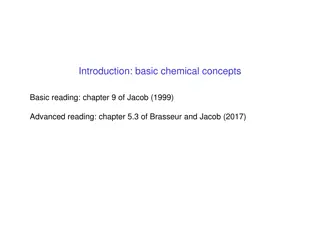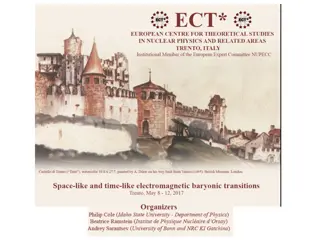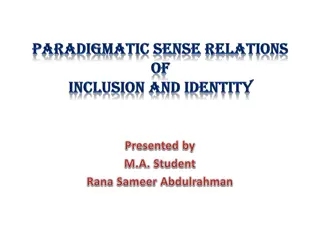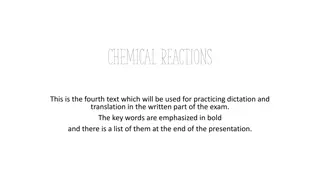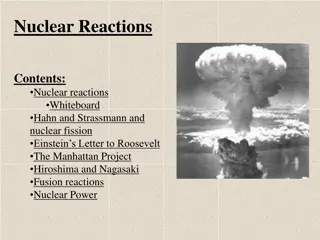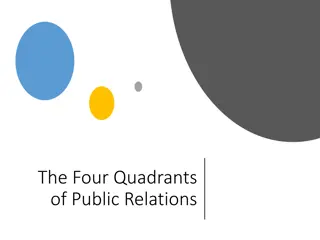Discussion on In-Medium Effects and Relations to Spectroscopy/Reactions
Implications of in-medium effects on spectroscopy, reactions, and form factors in baryonic systems. Dive into topics like quark-hadron duality, hadron melting at varying temperature/density, chiral symmetry restoration, and gluonic versus chiral-breaking masses.
Download Presentation

Please find below an Image/Link to download the presentation.
The content on the website is provided AS IS for your information and personal use only. It may not be sold, licensed, or shared on other websites without obtaining consent from the author.If you encounter any issues during the download, it is possible that the publisher has removed the file from their server.
You are allowed to download the files provided on this website for personal or commercial use, subject to the condition that they are used lawfully. All files are the property of their respective owners.
The content on the website is provided AS IS for your information and personal use only. It may not be sold, licensed, or shared on other websites without obtaining consent from the author.
E N D
Presentation Transcript
Discussion on In-Medium Effects and Relations to Spectroscopy/Reactions ECT* workshop on space- and timelike electromagnetic baryonic formfactors May 08-12, 2017 (ECT* Trento)
Change in Degrees of Freedom As function of q2 Spacelike: F2-Structure Funct. JLAB Data Timelike: e+e hadrons Im em(M) / M2 p M [GeV] d Q2 dual ~ 2.5-3 GeV2 depends on channel? x average Quark-Hadron Duality lower onset-Q2in nuclei?
As function of temperature/density B/ 0 0 0.1 0.7 2.6 Duality threshold Q2dual (T, B) ? Universality of hadron melting?
Chiral Symmetry + Restoration Gluonic vs. chiral-breaking mass Mh = (m0)glue + ( m)chiral-break Prospects for determining hadronic+EM couplings of chiral partners - a1 , N - N(1535), (1232) - N(1520) and what to conclude from them Implications/relations of PWAs on chiral structure and interactions of baryons
